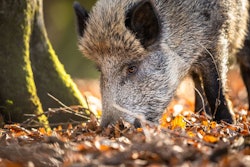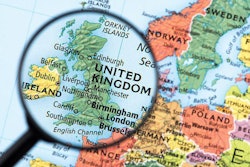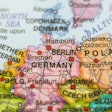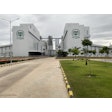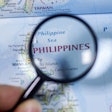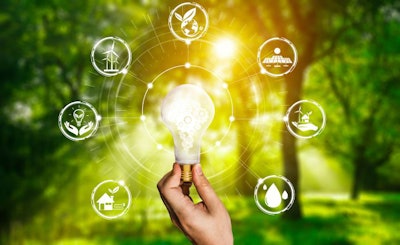
Agrifirm CEO Dick Hordijk discusses the importance of a responsible food chain, efforts to reduce deforestation and emissions, and how the industry is coping with fallout from the war in Ukraine.
Feed industry’s future depends on responsible production (10:19)
Ann Reus: Hello and welcome to the Feed Strategy podcast. I’m your host, Feed Strategy senior reporter Ann Reus.
Dick Hordijk is CEO of Agrifirm, one of Europe’s largest animal feed producers. According to Feed Strategy’s Top Feed Companies database, Netherlands-based Agrifirm produced more than 5.2 million metric tons of feed in 2021. Hordijk recently joined me to talk about a wide range of topics facing the industry today, from deforestation to circularity in feed to challenges caused by the war in Ukraine.
Here’s our conversation.
Hi, Dick. Thanks for being here.
Dick Hordijk: Hi, Ann. Welcome.
Reus: Agrifirm’s vision is to contribute to a responsible food chain for future generations. Can you tell me about any new sustainability initiatives the company is working on?
Hordijk: Yeah, I think I’m still very, very happy with that definition of responsible food chain. It basically means we look at the earth, the impact that our food chain has on our nature, of course, on animal welfare, but also, for example, we look at the income of our farmers, because at the end of the day, if the income is under too much pressure, it’s also not responsible. So very concrete, recently, we worked on the deforestation-free soy, so guaranteed coming from an area where there is no deforestation. And we are running a pilot with that with Campina now with lots of positive inputs.
We started a Fit4Feed program: Basically, we look at the ingredients that animals are eating and we ask ourselves the question, is this ingredient also fit for human consumption? And if the answer is yes, we say, you know, that means competition between feed and food, and we are not sure over the coming years, if that keeps going well. So if there is more pressure on your supplies, there will be more pressure on the ingredients being available for feed if they also can be fed to our children. So in our Fit4Feed program, we basically measure the contents of our feed solutions and if the percentage fit for food is too high, we start to work to bring it down – a very inspiring, I would say road that we have started there.
And the third example is short-chain initiatives. We realize if the farmer sells directly to consumer, a significant part of the margin stays with the customer, or with the farmer, I should say, and we’d love to investigate if there’s a role for Agrifirm to play in such initiatives.
Reus: Agriculture is often blamed for a large portion of the world’s greenhouse gas emissions. What are some things Agrifirm is doing that reduce emissions from agriculture?
Hordijk: Well, I think first of all, let me state that we admit that there is a challenge. So I think it is not so useful to say that everything is hunky dory the way it’s organized today. So, and at the same time, we realize it is not something that we can change overnight. And again, very often what you see is if you don’t take the right solutions, there will be tremendous pressure on farmers’ income, and as a result, there will be resistance. So we are looking for those solutions that include the technical answer, but also the financial, economical answer. A nice example is our Bovaer pilot. That is the stuff developed by DSM, as I’m sure you are aware, we are running a big pilot together again, with FrieslandCampina, just making sure that, indeed, the effect is what it should be. We see the income of the farmer improving because the footprint is lower, and you will face a better price when your footprint is below the standard.
We also invested in quite some money in regenerative agriculture, a very modern road, these days, as you know, many people are looking at it. And we try to understand, OK, so can you have more carbon captured in the soil, for example, no plowing or by applying other techniques that we have done in the past?
And finally, we are looking at our specialties, our additives. Can we develop solutions ourselves that we basically have lower greenhouse gas emissions coming from the animals?
Reus: I know your company is involved in research and innovation in several areas. Are there any new projects or innovations you’re particularly excited about?
Hordijk: Well, I think I mentioned already a couple of them. So what we have decided is we really like to focus our research. So we don’t want to try 25 things and hope two will work. We try to do an interesting, sharp selection. And basically in those we say, OK, this is how we should basically make the difference. I think if you look at our additives range, we are focusing on animal health, but also for example, on better growth as a better feed conversion because efficiency always will remain very important. So besides the stuff that I just mentioned, so the deforestation-free stuff, the work that we are doing on reducing emissions, we are also still looking at, OK, is there ways to have better feed conversion? As you can imagine, if you are sharpening your definition of what is an acceptable raw material for feed, your feed quality might get some pressure. You still want to have the same quality of growth and health at the farm. And you have to look at smart additives that take care of the animal’s health, for example, from a stomach perspective or something like that. So we try to have focus on those topics and bring them together in our research projects.
Reus: Can you talk about some of the current challenges your company and your clients are experiencing as a result of the war in Ukraine?
Hordijk: Yeah, I think what I found an interesting topic – there are many, many examples of direct impact, as you know, Ann – I mean, there is the high gas price resulting, of course, in the high cost of the different ingredients that they are using in the farm and on the field. If you look at the results of the war in the area of availability of grain, the cost of the raw materials, there is a lot of direct impacts on the food chain across Europe. The one example I like to point out is Africa, we are dealing with large local players in a range of countries in across Africa and the Middle East. And what we noticed is that the grain prices went up significantly as a result of the war in Ukraine, and there are of course, the impacts even more direct and heavy on the population than we have here in Europe. The result was that, basically, it was no longer economically viable to feed the grain to the chicken. So there was a tremendous pressure on the chicken industry in Africa. And at Agrifirm, we realized, you know, but this this makes sense. So if this grain is fit for human consumption, we should not find ways to feed them to chicken; we should accept that there is a temporary dip. And of course, you want to keep those chicken farmers in business. So, of course, we do all we can with them to sort out the alternatives, or to skip the cycle and then restart again. But yeah, we do understand that over time, this might be one of those signals that we say the competition between feed and food cannot be solved by keep on increasing the price that we pay for our feed ingredients. We have to look at alternative ingredients to feed those animals.
Reus: Yeah, and you mentioned some of those challenges – high feed costs, energy costs, supply chain issues, feed ingredient availability. How are ag producers across Europe coping with those issues?
Hordijk: Well, I think that, remarkably, to a large extent, people have been dealing with it by getting better prices for their goods. So if you look at the price of milk, for example, everybody noticed, it’s remarkable how that increased. So, at the end of the day, in the remainder of the chain, the retailers, food producers, etc., there was an understanding that the better price had to be paid to keep the business of the farmer healthy. I think we saw to a certain extent, in other areas as well, like in layers and broilers. I think in pigs, I saw a varying combination of feed prices being high and prices of the pig itself not developing in the right direction for the farmer. So that will be the examples where I say, well, I’m not sure if we are able to cope with those new expensive levels and if this continues to last for a while, and at the moment, the feeling is it might take a while before we go back to the normal situation again, you might see quite some pressure on that specific segment across Europe.
Reus: And what are some other trends that you expect to see in the animal feed industry in 2023?
Hordijk: I think there’s a lot of attention on the agenda of circularity. And I really like that. I think circularity, of course, has always been important in big parts of the animal feed industry, right. So we are using our byproducts either in the wet or in the dry form. And I do believe there will be more demand in that area. Again, because it doesn’t compete with food. It is something that is not fit for human consumption, but it contains great nutritional value. And I think our legislation systems are not always supporting us in the best possible way, and I see that is getting more attention here in Holland, but also on the European level. So what I hope is that we get better regulation in terms of allowing more feedstock to be used in a circular way for feeding our animals. Because there is, I strongly believe, the future of animal breeding here in Europe, that is still you know, we will eat a portion of meat, not all of us, but a large portion of us will eat meat, it might be slightly less meat than we did a few years ago. But you will need a food chain that basically finds the best way to feed those animals in a healthy way for the animal but also of course for the farm and there I really see circularity getting more and more attention and that is right because I believe that really is the future-proof solution that we see more and more across all species.
Reus: Well, we’ll be watching those issues and reporting on them along with you. So, just want to say thank you for taking the time today to be here on the podcast.
Hordijk: OK, you’re welcome. Thank you.
Reus: And thank you to the audience for tuning in. I’m Ann Reus for Feed Strategy.

